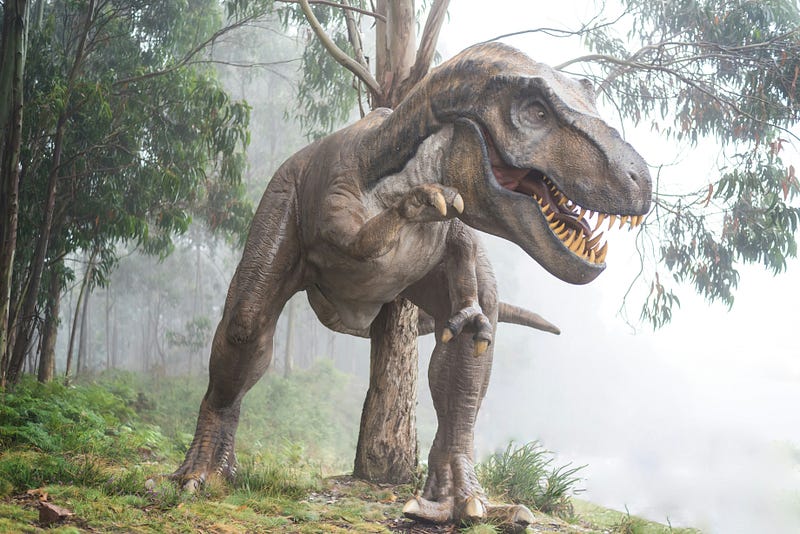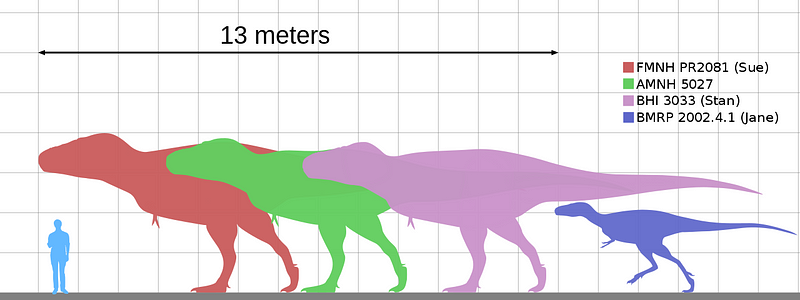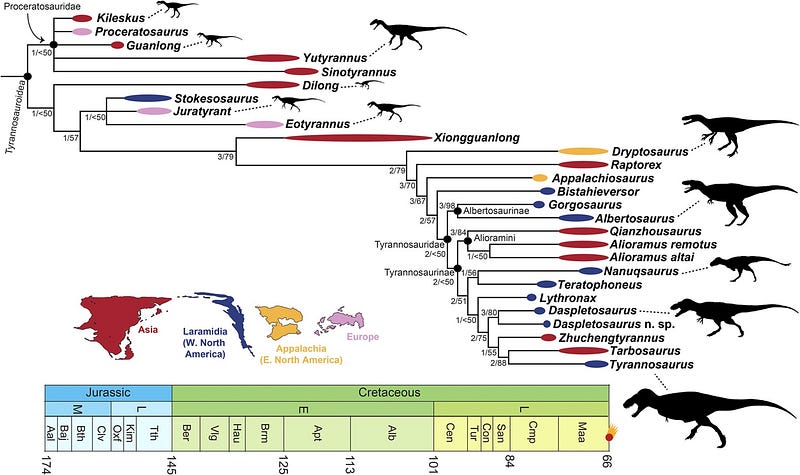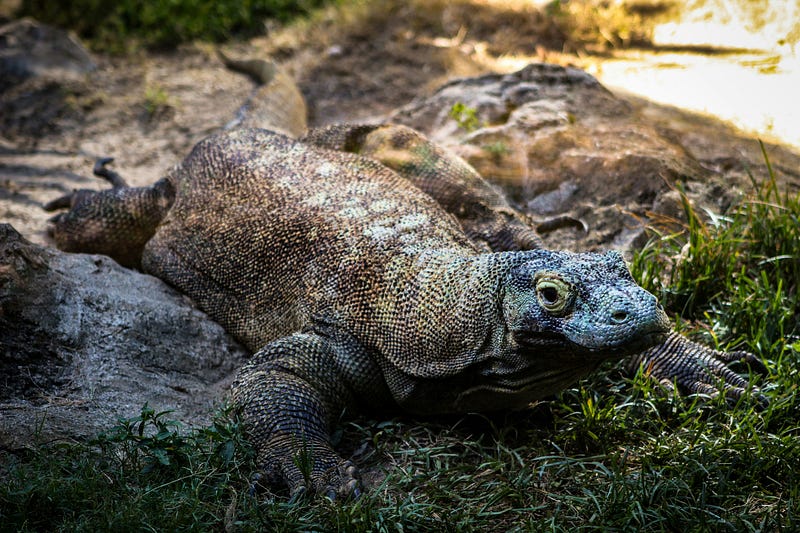Curious Insights Into T. rex's Tiny Arms: Evolution Unveiled
Written on
Chapter 1: The Mystery of T. rex's Tiny Limbs
Few extinct creatures ignite as much curiosity as the Tyrannosaurus rex, especially when it comes to its diminutive arms, which have sparked scientific discussion for decades.

Photo by Fausto García-Menéndez on Unsplash
The last course I taught in university was about Dinosaurs and their Relatives, marking a delightful farewell to an academic career filled with cherished memories. Recently, I decided to keep that passion alive through my blog, applying my paleontological insights to enlighten others and stay current with new discoveries.
Today, let’s delve into the fascinating, terrifying, and sweet world of Tyrannosaurus rex! Ask any dinosaur enthusiast, young or old, and they’ll share a few fun facts about this colossal creature. Common knowledge suggests that T. rex was enormous, ferocious, and… had remarkably tiny arms. But have you ever pondered why these limbs evolved to be so small? What factors contributed to their size, and why didn’t they completely disappear?

The T. rex inhabited the western United States between 68 and 66 million years ago during the Cretaceous Period, reigning as the largest land carnivore. Despite its fearsome image, those tiny arms have become the subject of countless jokes — no push-ups for T. rex, and certainly no high-fives! What about a hug?
From a biological perspective, this phenomenon poses quite a puzzle. Picture this immense creature, weighing around 10,000 pounds (approximately 4,400 kilograms) and towering up to 6 meters, yet possessing forelimbs that are a mere fraction of its overall size. It seems oddly disproportionate, doesn’t it? However, the evolutionary journey of T. rex and its tiny arms tells a compelling story about its lineage.
Long before T. rex, its ancestors roamed on four legs during the Triassic period, but as they evolved to walk on two limbs, their forelimbs transformed. Initially, these arms, equipped with sharp claws, were useful for hunting. However, around 150 million years ago, the family tree leading to Tyrannosaurus rex began a distinct evolutionary path. This lineage developed formidable jaws with a bone-crushing bite force, rendering long arms unnecessary and even cumbersome.

Why did the arms evolve to be so tiny?
Paleontologists and evolutionary biologists often seek to understand why certain traits emerge or fade within a species. In the case of T. rex, the answer might involve a blend of lifestyle changes and evolutionary necessity. Interestingly, shorter arms may have been a survival tactic rather than a disadvantage.
To begin, let’s evaluate T. rex’s hunting methods. With a bite capable of shattering bones, this dinosaur likely didn’t require long arms to subdue its prey. Its massive head and powerful jaws were sufficient for the hunt. Thus, long forelimbs were not only unnecessary but could have been a hindrance — imagine those lengthy arms getting in the way as this predator charged through its environment.
Additionally, the T. rex’s mode of movement likely contributed to the shortening of its arms. Unlike humans, who use arm swings for balance while walking or running, T. rex had a large, rigid tail that served as a stabilizer. This tail enabled the dinosaur to maintain balance without the need for swinging its arms. Consequently, evolution could permit the reduction of forelimbs without compromising mobility.
In a fascinating twist, Dr. Kevin Padian from the University of California, Berkeley, proposed in 2022 that the shortening of the arms could have been an adaptation to prevent injuries during feeding frenzies. Picture a group of T. rexes converging on a carcass — space is limited, everyone is hungry, and those powerful jaws are snapping all around. In such chaotic scenarios, longer arms could easily become a liability, risking bites from fellow diners.
Padian’s hypothesis suggests that as these dinosaurs evolved to hunt in packs, shorter arms became advantageous, minimizing the risk of injury during communal feeding. This idea might also explain similar patterns of limb reduction in other large carnivorous species across different periods and regions, such as Indonesia’s Komodo dragon (Varanus komodoensis), which hunts in groups and has been observed accidentally injuring one another.

(Fun fact: I had the fortune of seeing them in the wild during my visit to Komodo Island in 2015, but that's a story for another day!)
While proving such a theory without direct fossil evidence is challenging, it provides a plausible explanation for the peculiar evolution of T. rex and its relatives. This perspective shifts the emphasis from the potential uses of the arms to the advantages their reduction offered the rest of the creature — primarily, keeping them safe during meals.
So, the next time you chuckle at the thought of T. rex’s tiny arms, remember: those little limbs might have been crucial for survival in a world where vulnerability could mean life or death.
Why didn’t they completely vanish?
However, this doesn’t imply that these small arms were without purpose. Recent studies indicate that T. rex may have utilized its strong, albeit short, forelimbs for activities such as mating or combat.
It’s easy to dismiss T. rex’s arms as evolutionary remnants without function, but this may not be accurate. Fossil excavations and 3D reconstructions have revealed that T. rex’s arms were muscular and capable of movement. While they may not have been essential for survival, they certainly had their uses — whether for embracing, gripping, or engaging in skirmishes.
The key question remains: had T. rex not faced extinction, would its descendants have eventually lost these arms? It appears these limbs were inherited through generations, gradually shrinking but never entirely disappearing. Given their muscular structure and claws, it’s uncertain what their ultimate role would have been in the hypothetical descendants of Tyrannosaurids.
Nonetheless, dinosaur research relies heavily on fossil discoveries, and as such, it is ever-evolving. The enigma of T. rex’s arms continues to intrigue scientists and enthusiasts alike, with each new fossil discovery potentially rewriting parts of this prehistoric narrative. Annual excavation campaigns are organized, so who knows? Perhaps one day we’ll uncover a T. rex fossil — or one of its relatives — that could provide us with definitive answers. But until that day arrives, let’s revel in the stories and theories we have.
Keep those inquisitive minds engaged. Who knows what other secrets of dinosaurs await our discovery!
In the first video titled "Why did T. rex have small arms? | Natural History Museum," we explore the intriguing reasons behind the tiny arms of T. rex, diving into the evolutionary context and scientific insights.
The second video, "Why Did T Rex Have Such Tiny Arms?," further examines the fascinating adaptations of T. rex, providing additional perspectives on its evolutionary journey.
Published in Fossils et al. Follow to learn more about Paleontology.